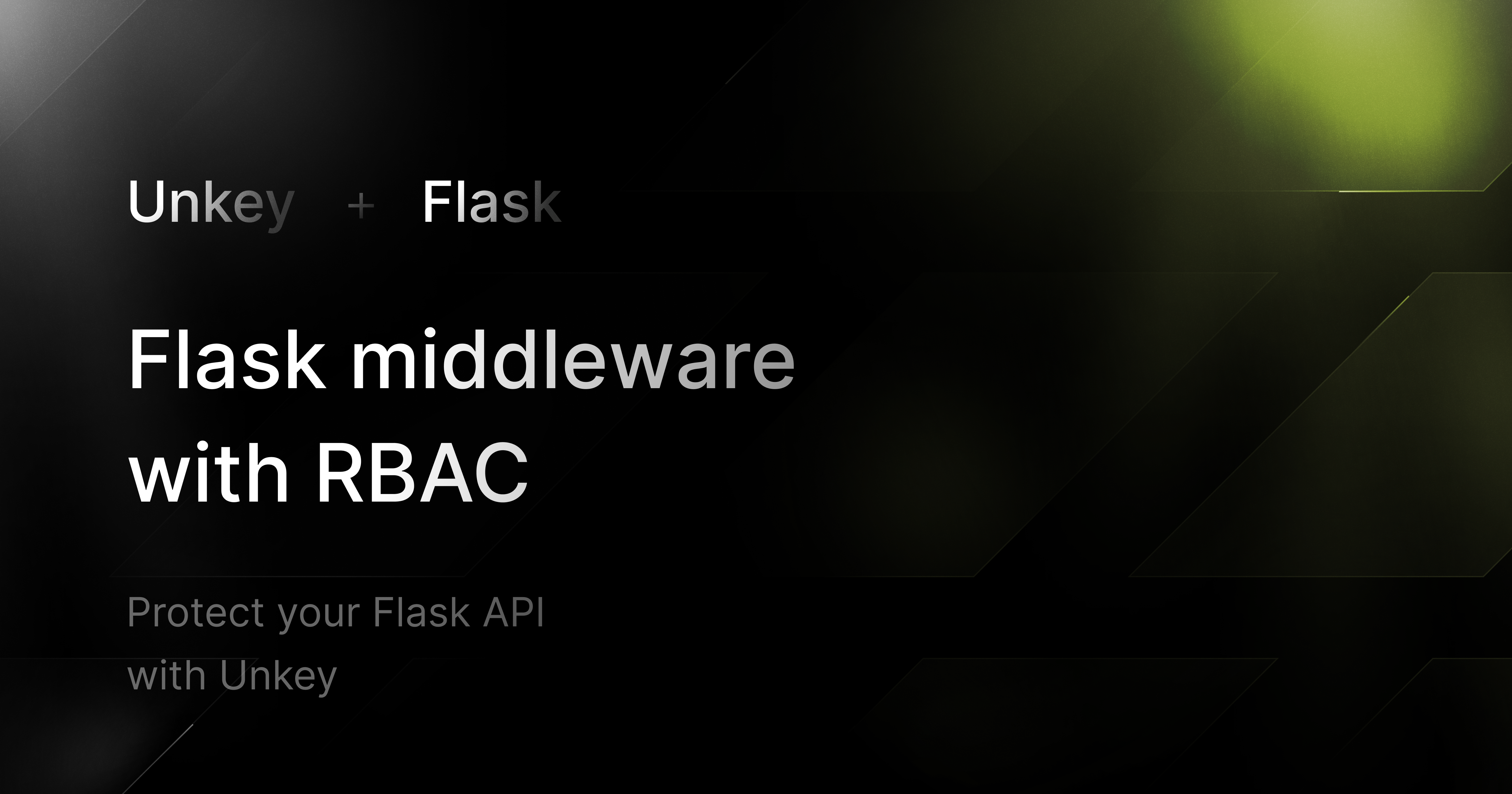Back to Templates
Flask middleware with RBAC
Protect your Flask API with Unkey
- Written by
- harshsbhat
- Framework
- Flask
- Language
- Python

Flask middleware with Unkey RBAC
This simple Flask application demonstrates how to implement API key verification using the Unkey service. The application has both public and protected routes, with the protected route requiring a valid API key.
Features
- Public Route: Accessible without any authentication.
- Protected Route: Requires a valid API key to access.
- Middleware: Utilizes a decorator to enforce unkey verification on protected routes.
Setup Unkey
- Create an unkey account
- Create a new API. Copy the
API ID. - Go to permissions and create a new permission named
withAuth - Now go to roles and create a new role and select the
withAuthpermission for the role. - Go to apis again and create a new key
- Click on the "Keys" tab.
- Select the key you created.
- Click on the "Permissions" tab.
- Check the role's checkbox to assign the role and permission to the key.
- Create a new root key from the settings/root-key
Prerequisites
- Python 3.x
- Flask
- Requests library
- An account with Unkey and your API ID and Root Key
Installation
-
Clone this repository:
1git clone https://github.com/harshsbhat/unkey-flask.git2cd unkey-flask34 -
Set up a virtual environment (optional but recommended): :
1python3 -m venv venv # For Linux/macOS2source venv/bin/activate # For Linux/macOS34python -m venv venv # For Windows5venv\Scripts\activate # For Windows6 -
Set up your environment variables: Create a .env file in the project root and add the following variables. Get the Unkey API ID and Unkey rootkey from unkey dashboard
1UNKEY_API_ID=your_unkey_api_id2UNKEY_ROOT_KEY=your_unkey_root_key -
Install the required dependencies
1pip install -r requirements.txt
Usage
-
Run the project:
1python3 src/main.py # For MacOS/Linux23python src/main.py # For windows
- Public Route: Visit
http://localhost:3000/publicto access the public route. - Protected Route: Use a tool like Postman or curl to send a GET request to
http://localhost:3000/protectedwith anAuthorizationheader containing your API key.
Example protected request using curl:
1curl http://127.0.0.1:3000/public
Example protected request using curl ( MAKE SURE THE API KEY has the withAuth permission ):
1curl -H "Authorization: Bearer <api_key>" http://localhost:3000/protected
Protect your API.
Start today.
2500 verifications and 100K successful rate‑limited requests per month. No CC required.